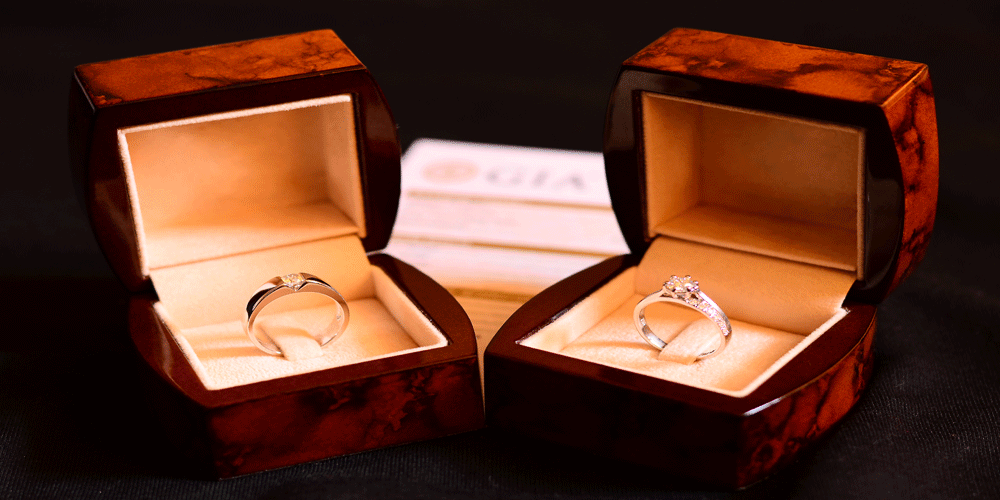Checkin Out the Origins of the Wedding Ring
The wedding ring, a timeless symbol of love and commitment, has a rich history that spans centuries and cultures. It’s a small, circular band that holds immense significance, representing eternal love, unity, and the promise of a lifelong partnership. The origins of the wedding ring are as intriguing as they are romantic.
Ancient Egypt is often cited as one of the earliest civilizations where rings were exchanged as symbols of love and commitment. These early rings were crafted from natural materials like reeds, hemp, and leather, symbolizing the eternal and unending nature of the couple’s love. The circular shape signified infinity, with no beginning or end—a representation that still holds true today.
The tradition of wearing wedding rings on the fourth finger of the left hand is rooted in ancient Egyptian belief. They believed that a vein, later named the “vena amoris” or the “vein of love,” ran directly from this finger to the heart, making it the most fitting place for a symbol of love.
The Romans also embraced the custom of exchanging rings as a symbol of marriage. Their rings were often made of iron, symbolizing strength and permanence. As time passed, the materials used for rings evolved to include precious metals like gold and silver, further enhancing the symbolism of wealth, status, and enduring love.
In Christian ceremonies, the exchange of rings became a significant part of the wedding ritual around the 9th century. The church viewed the ring as a representation of the couple’s commitment and fidelity to each other, as well as a symbol of the union blessed by God.
The concept of inscribing rings with personal messages or meaningful symbols also emerged during the Middle Ages. These inscriptions added another layer of sentimentality and individuality to the rings, turning them into cherished heirlooms passed down through generations.
The evolution of the wedding ring has seen various cultural influences and design changes over time. For instance, during the Renaissance period in Europe, rings became more ornate and intricate, often adorned with gemstones or enamel detailing, showcasing the craftsmanship and artistry of the era. These embellishments symbolized not only love and commitment but also social status and wealth.
In different cultures around the world, the significance and design of wedding rings vary. In some Eastern cultures, intricate patterns and motifs reflecting cultural symbols are incorporated into the ring designs. For example, in Indian culture, wedding rings may be part of a set of ornate jewelry known as “Mangalsutra,” which symbolizes the marital status of a woman.
The symbolism behind the ring’s circular shape has also expanded over time. Beyond representing eternity and never-ending love, it’s also seen as a symbol of equality and unity between partners. The unbroken circle signifies the idea of a partnership where both individuals are whole on their own, yet together they form an unbroken, unified entity.
In contemporary times, the concept of wedding rings has evolved to include diverse materials and styles. Couples often opt for rings made from unconventional materials like titanium, tungsten, or even wood, reflecting their unique personalities and preferences. Additionally, some couples choose matching or complementary ring designs as a way to symbolize their unity and shared commitment.
Furthermore, the symbolism of the wedding ring has extended beyond romantic relationships. Rings are also exchanged in friendships, commitments to causes, and even as symbols of self-love and empowerment. The act of wearing a ring can signify allegiance, dedication, and a sense of belonging.
Interestingly, while the tradition of exchanging rings remains strong, there’s also an increasing trend toward personalization and individual expression. Couples are embracing custom designs, incorporating elements that hold personal significance, such as fingerprints, initials, or coordinates that mark a special place in their relationship’s journey.
Today, the tradition of exchanging rings during weddings persists across various cultures and religions, albeit with variations in style, design, and customs. Some couples opt for personalized rings, incorporating birthstones, unique engravings, or specific designs that hold personal significance.
The wedding ring’s symbolism has remained constant throughout history — a tangible representation of a couple’s enduring love, commitment, and the promise to stand by each other through thick and thin. It’s a tradition that transcends time, cultures, and continents, embodying the essence of unity and everlasting love.
